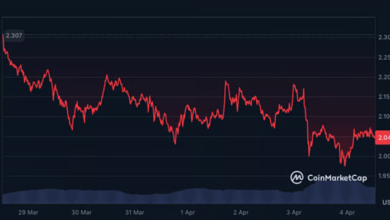Common Symptoms Indicating the Need for a Root Canal

Persistent Toothache
A persistent toothache is often the first sign that something’s not quite right inside your tooth. It’s not just a fleeting twinge; it’s a pain that sticks around, making you wonder what’s going on.
Sharp, Shooting Pain
This kind of pain feels like a jolt, often happening suddenly. It can be triggered by something as simple as biting down or even just a change in temperature. It’s the kind of pain that makes you stop what you’re doing.
Dull, Constant Ache
Sometimes, the pain isn’t sharp but more of a low, steady ache. It might be in the tooth itself or spread to the surrounding jawbone. This kind of discomfort can wear you down over time, making it hard to concentrate.
Pain When Chewing or Applying Pressure
If you notice pain or discomfort when you bite down on food or even just press on the tooth, that’s a big clue. It suggests that the inner part of the tooth, the pulp, might be inflamed or infected, and pressure makes it worse.
It’s easy to ignore a little tooth discomfort at first, hoping it will just go away on its own. But when that ache becomes a regular visitor, or a sharp jab interrupts your day, it’s your body’s way of telling you it needs attention. Don’t wait too long to find out why.
Gum Sensitivity and Swelling
Sometimes, your gums can give you a heads-up that something’s not quite right with a tooth. You might notice the area around a specific tooth looking a bit red or feeling tender to the touch. It’s like your gums are sending out a little distress signal.
More than just tenderness, you could see some actual swelling. This puffiness can make the gum tissue look fuller or more prominent than usual.
And sometimes, a tiny bump might pop up on the gum line, right near the sore tooth. This little bump is often called an abscess, and it’s basically a small pocket of pus that forms when there’s an infection inside the tooth.
It’s easy to overlook minor gum irritation, but when it’s localized around one tooth and persistent, it’s worth paying attention to. Your gums are connected to your teeth, and problems can show up in both places.
Redness and Tenderness Around the Tooth
Swollen Gums
A Small Bump on the Gums (Abscess)
Discoloration of the Tooth
Sometimes, a tooth that’s been bothering you might start to look a little different. You might notice it changing color, maybe getting darker or more yellow than the teeth around it. This isn’t just about looks, though. It can be a sign that the pulp inside your tooth, the soft part with nerves and blood vessels, is damaged or dying. When that happens, the tooth can lose its natural vitality and start to change hue. It’s like the life is draining out of it, and the color change is the visual cue. It’s not always a dramatic shift, sometimes it’s subtle, but if you’re paying attention to your smile, you might spot it. This change in color can happen gradually over time, or sometimes more quickly after an injury to the tooth, even if you didn’t think it was that bad at the time. It’s definitely something to get checked out by your dentist if you see it happening.
Tooth Sensitivity to Temperature
Ever notice a twinge when you sip your iced coffee or grab something hot? That’s your tooth talking, and sometimes, it’s trying to tell you something more serious is going on inside. When your tooth becomes overly sensitive to temperature changes, it often points to damage to the pulp, the soft inner part of your tooth where the nerves reside. This sensitivity isn’t just a minor annoyance; it can be a significant indicator that the nerve inside your tooth is inflamed or infected, possibly needing a root canal.
Lingering Pain After Hot or Cold Exposure
This is a big one. If you drink something cold and feel a sharp pain that doesn’t go away for a while after the cold is gone, that’s a classic sign. The same goes for hot drinks. Normally, sensitivity is brief, but with pulp issues, the pain can stick around for minutes, sometimes even longer. It’s like the nerve is sending out distress signals that just won’t quit.
Discomfort from Hot Drinks
While cold sensitivity is common, sensitivity to heat can be particularly telling. Heat can actually cause the inflamed pulp inside the tooth to expand, putting pressure on the nerves. This pressure often translates into a throbbing or aching pain that can be quite intense and persistent. If hot beverages are now a source of dread rather than comfort, it’s time to pay attention.
Sensitivity to Cold Air
Sometimes, the sensitivity isn’t just from drinks or food. Even breathing in cold air through your mouth can trigger that sharp, unpleasant sensation. This happens because the cold air reaches the exposed dentin (the layer beneath the enamel) and then travels to the nerve. When this sensitivity is prolonged or particularly sharp, it’s another clue that the tooth’s internal health might be compromised.
It’s easy to dismiss tooth sensitivity as just something that happens with age or from eating certain foods. But when that sensitivity is new, persistent, or accompanied by other symptoms, it’s your body’s way of alerting you to a potential problem that needs professional attention.
Chipped or Cracked Tooth
Sometimes, you might notice something’s off with your tooth, like a visible chip or crack. It might not always hurt right away, but it’s a big sign that something’s wrong inside. Even a tiny crack can let bacteria get in, causing infection and that familiar toothache. If you bite down and feel a sharp pain, or if you can actually see a piece of your tooth is missing or has a line through it, it’s time to get it checked out.
Visible Damage to the Tooth
This is pretty straightforward. You look in the mirror, and bam – there’s a chip, a break, or a noticeable line running through your tooth. It could be from an accident, grinding your teeth at night, or even biting down on something hard. Don’t ignore it, even if it doesn’t hurt yet. That damage is an open door for trouble.
Pain Associated with a Crack
If you’ve got a cracked tooth, you might feel pain when you chew or put pressure on it. It can be a sharp, sudden pain, or sometimes a more dull ache. The pain might come and go, and it can be tricky to pinpoint exactly where it’s coming from.
A cracked tooth can be tricky because the pain might not be constant. You might only feel it when you bite down or when your tooth is exposed to temperature changes. It’s like a warning light that you shouldn’t ignore.
Loose Tooth
Sometimes, a tooth that feels a bit wobbly can be a sign that something’s not right inside. It might not be a sharp pain, but just a general feeling that your tooth isn’t as firm as it used to be. This looseness can happen because the infection or inflammation from the tooth’s pulp has spread to the surrounding tissues, including the bone that holds the tooth in place.
Tooth Mobility
If you notice your tooth moving when you touch it, even slightly, that’s a big clue. It’s not supposed to wiggle! This mobility is often due to the damage caused by infection weakening the support structures. It’s like the foundation of a house getting compromised; the whole structure becomes unstable.
Feeling of Looseness
Beyond just visible movement, you might just have a sensation that a tooth is loose. It can feel ‘off’ or like it’s shifting when you bite down or even when you talk. This feeling can be unsettling and is a good reason to get it checked out. If you’re in the San Diego area and experiencing this, it’s worth a visit to your dentist. Ignoring it could lead to more serious problems, and in some cases, might even lead to needing a tooth extraction San Diego if the damage is too extensive.
Don’t Wait to Get Help
So, if you’re dealing with any of those toothaches or sensitivities we talked about, it’s really best not to put off seeing a dentist. Ignoring the problem usually just makes things worse, and trust me, you don’t want that. A root canal might sound scary, but it’s a common procedure that can save your tooth and stop that pain. Getting it checked out early is the smartest move you can make for your smile.
Frequently Asked Questions
What exactly is a root canal?
A root canal is a dental procedure to fix a tooth that’s badly decayed or infected. The dentist San Diego CA cleans out the yucky stuff inside the tooth’s root and then fills and seals it. It’s done to save your tooth and stop the pain.
How do I know if I need a root canal?
You might need one if you have a toothache that just won’t quit, especially if it’s a sharp, throbbing pain. Also, if your tooth hurts when you bite down or touch it, or if your gums around the tooth are swollen and red, it’s a good sign you should see a dentist.
Will a root canal hurt a lot?
Yep, it can definitely hurt! But the good news is, the pain you feel *before* the root canal is usually much worse than any discomfort during or after the procedure. Dentists use numbing medicine to make sure you’re comfortable.
Why would my tooth change color?
Sometimes, a tooth that needs a root canal can look darker or more yellow than your other teeth. This happens because the stuff inside the tooth might have died and changed color. It’s like a bruise on the tooth.
What about tooth sensitivity?
If your tooth is super sensitive to hot or cold things, and the pain sticks around even after the hot or cold is gone, that’s a big clue. Even feeling pain from cold air blowing on your tooth can mean trouble inside.
What happens if I don’t get a root canal?
A root canal is usually done to save a tooth that’s in bad shape. If you don’t get it treated, the infection could spread, and you might end up needing to pull the tooth out altogether. Fixing it with a root canal is often the best way to keep your natural tooth.







